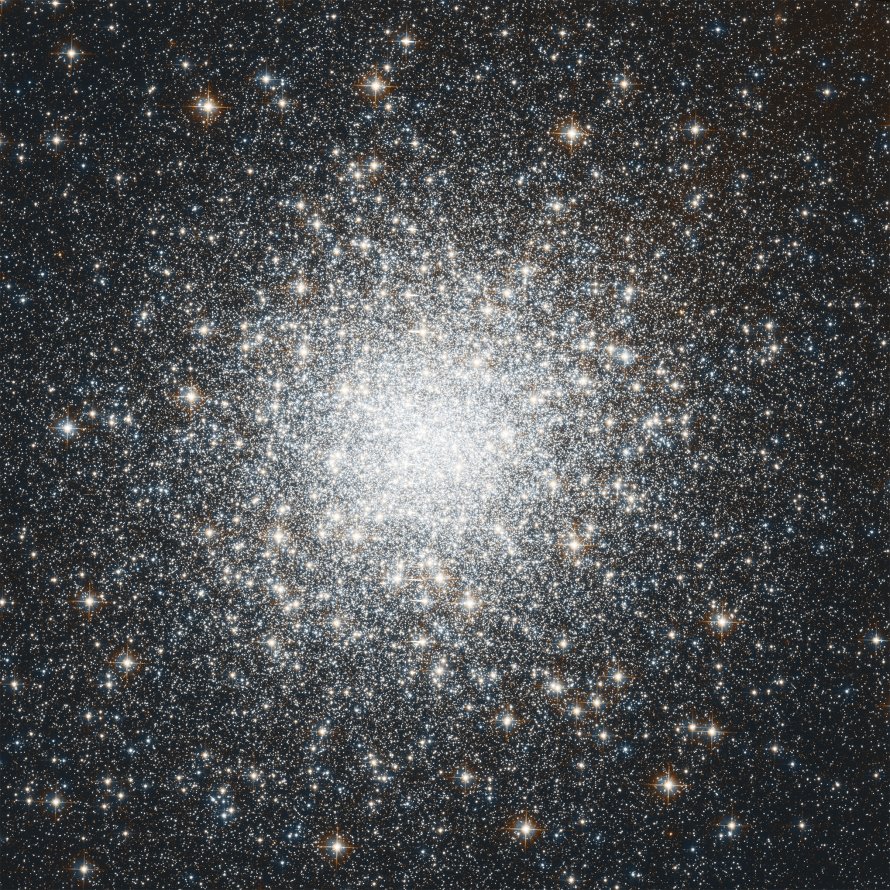M2 (NGC 7089)
Messier 2 (NGC 7089) is a globular cluster located in the constellation Aquarius, in the Galactic Center of the Milky Way Galaxy in the Local Group of galaxies. M2 is 55000 light years away from Earth.
M2 is best viewed during early spring, is magnitude 6.3, and can be viewed with binoculars. M2 is 16' in apparent size. For reference, the full moon is 30'.
Observing difficulty: Easy
- Name:
- Type:
- globular cluster
- Constellation:
- Aquarius
- NGC or IC:
- NGC 7089
- Magnitude:
- 6.3
- Viewing:
- binoculars
- Size:
- 16'
- Distance (light years):
- 55000 LY
- RA:
- 21h 33.5m
- Dec:
- -0 49'
- Season:
- early spring
- Milky Way location:
- Galactic Center
- Galaxy group:
- Local Group
- Messier Marathon #:
- 107
- Contains:
- 150,000 stars
* The naked eye can see up to magnitude ~7-8 objects under ideal dark sky conditions.
A Stellar Assembly in the Depths of Space
Messier 2, aka M2 or NGC 7089, is a stunning example of a globular cluster, a spherically concentrated collection of ancient stars bound together by their own gravitational pull. Situated in the constellation Aquarius, approximately 55,000 light-years from Earth, Messier 2 is an astronomical spectacle teeming with scientific intrigue and discovery.
Discovery and Observation of Messier 2
Messier 2 was discovered by the French astronomer Jean-Dominique Maraldi in 1746 while he was observing a comet. However, it wasn't until 1760 that Charles Messier cataloged it, hence its designation
Physical Characteristics
This cluster's stellar density and distribution extend to a diameter of about 175 light-years, but the core radius, where the concentration of stars is noticeably higher, spans merely 1/20th of the total extent. The tidal radius, the outer boundary beyond which member stars would be pulled away by the galaxy's gravitational field, is about 220 light-years. Spectroscopic measurements indicate that the cluster's stars move with an average velocity of about 5.3 km/s.
Stellar Composition
M2 is rich in stars, boasting a population of about 150,000. These stars are predominantly old, with an estimated age of 13 billion years. As such, the stars of M2 are metal-poor, characterized by a lower proportion of elements heavier than helium, as expected for their age. The stellar classification is mainly red and yellow giants, with a smattering of blue stragglers, stars that appear to be younger than they should be. These blue stragglers are believed to result from stellar interactions or collisions, quite common in globular clusters' dense environments.
Structure and Formation
Globular clusters like M2 are believed to have formed very early in the history of the universe. Their stars are among the oldest known, offering a glimpse into the early universe's conditions. M2, like other globular clusters, exhibits a high degree of spherical symmetry. This shape results from the mutual gravitational interactions between the stars over billions of years, which have nudged them into a state of dynamic equilibrium. The cluster's structure is also influenced by tidal interactions with the Milky Way galaxy itself.
Scientific Significance and Research
The study of globular clusters like M2 helps astronomers understand the early universe's conditions and the process of galaxy formation. The age, chemical composition, and distribution of stars in these clusters provide critical insights into these topics. Furthermore, M2's relative proximity to Earth (in cosmic terms) allows for detailed observations that might not be possible with more distant clusters. Therefore, M2 and clusters like it are vital tools for astrophysical research and are continually studied with ground-based and space telescopes across multiple wavelengths.
Apparent Magnitude and Distance
M2 has an apparent magnitude of 6.5, which makes it barely visible to the naked eye under ideal observing conditions, and is easier to spot with binoculars or a small telescope. The cluster is situated at a considerable distance of about 37,500 light-years from Earth.
Finding and Observing Messier 2
M2 can be found in the constellation Aquarius, near the star Sadal Melik (Alpha Aquarii). The cluster is observable from both hemispheres but is best seen during the late summer and early autumn months when Aquarius is high in the sky.
While binoculars reveal M2 as a faint and fuzzy point of light, a small telescope starts to resolve the outer edges of the cluster. A larger telescope under dark skies can begin to resolve individual stars, especially at the cluster's periphery. However, due to its great distance and compactness, resolving individual stars towards the core can be challenging even for large amateur telescopes.



